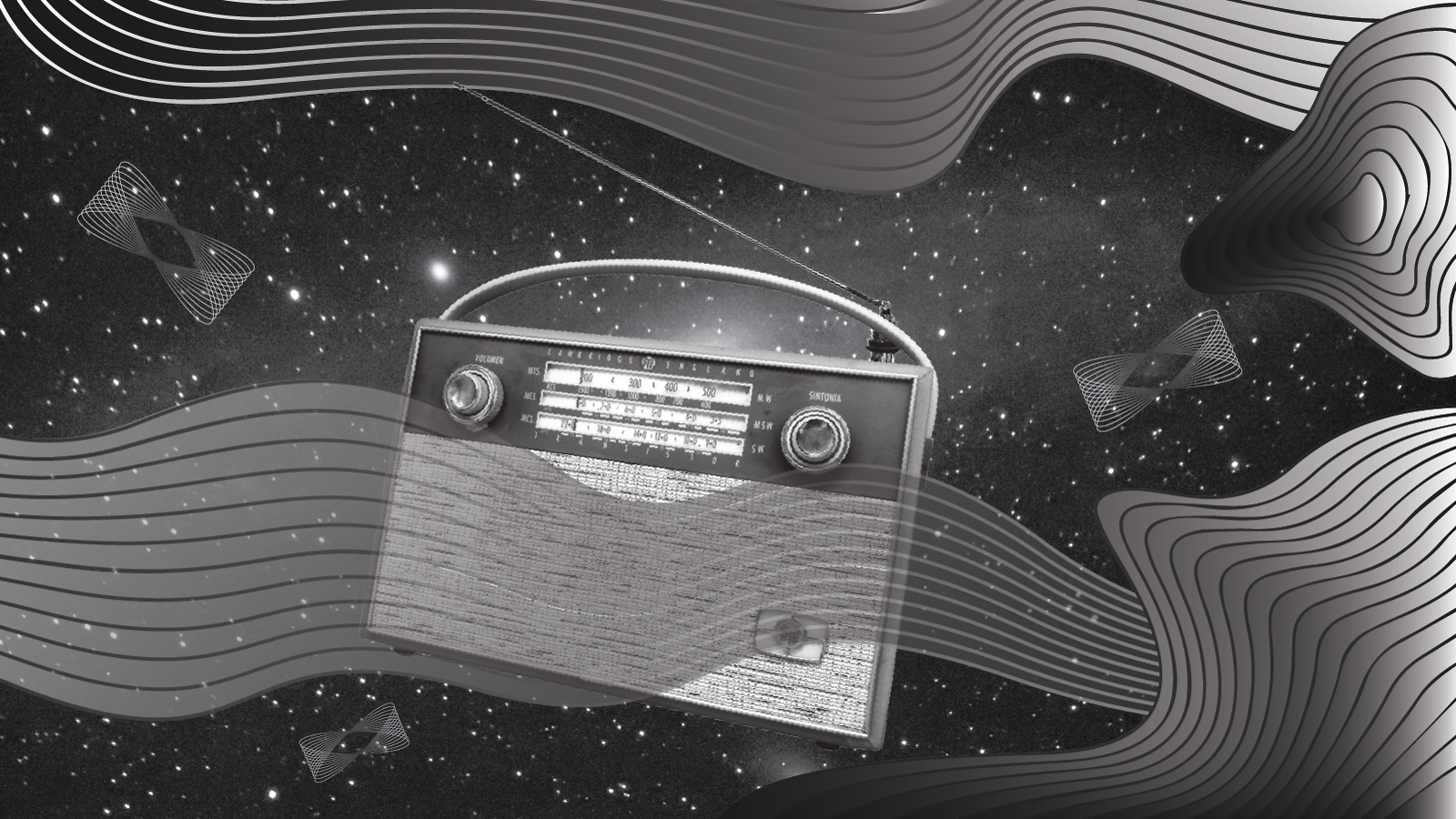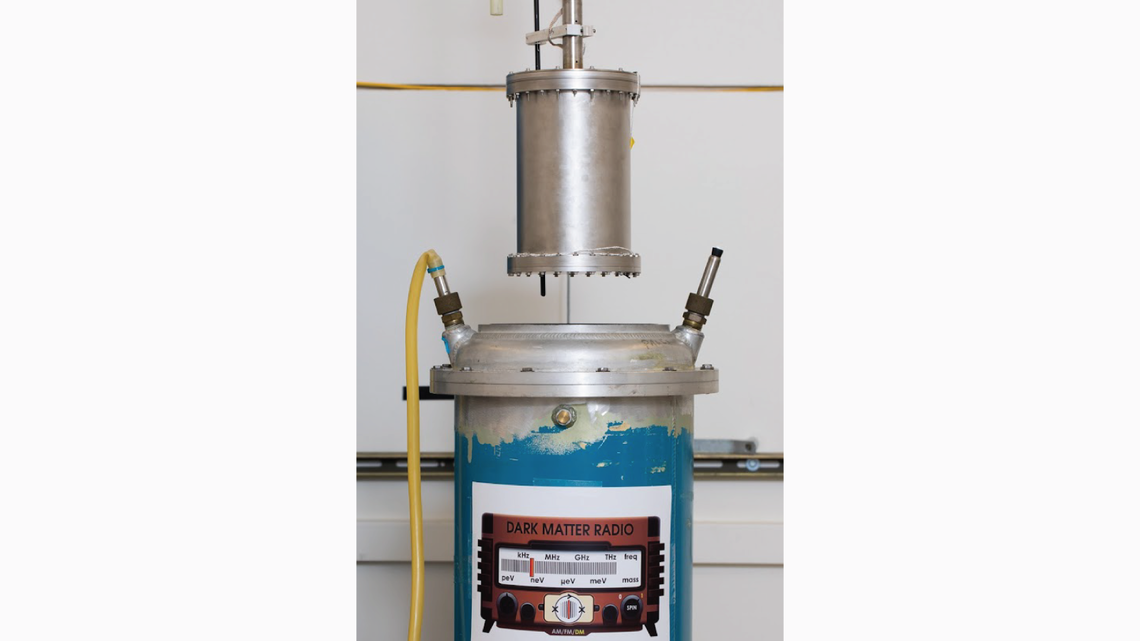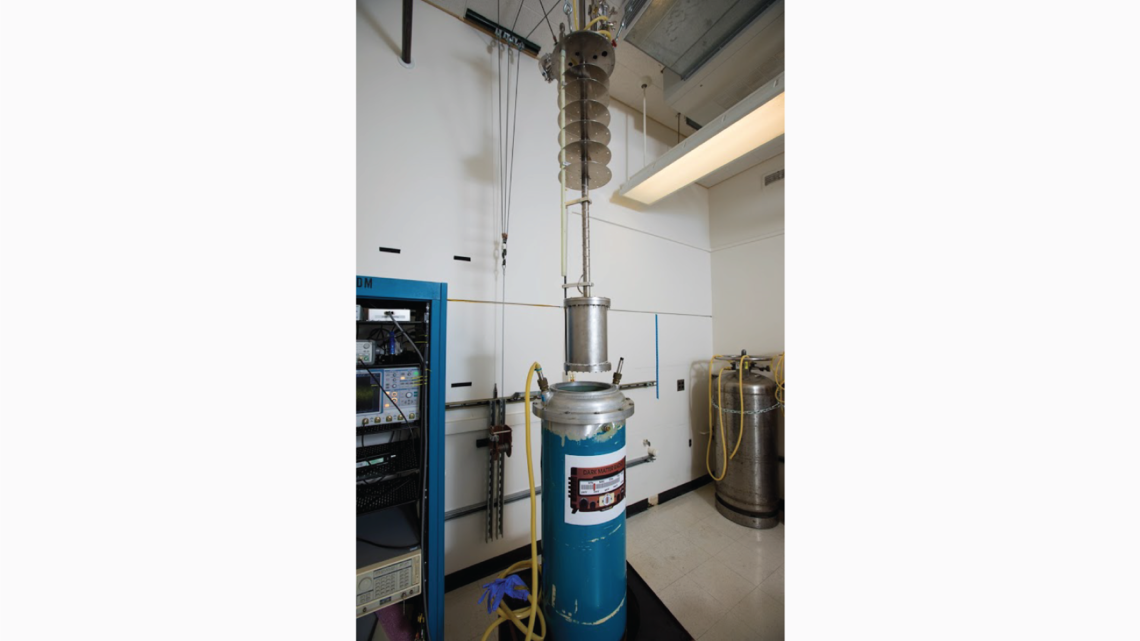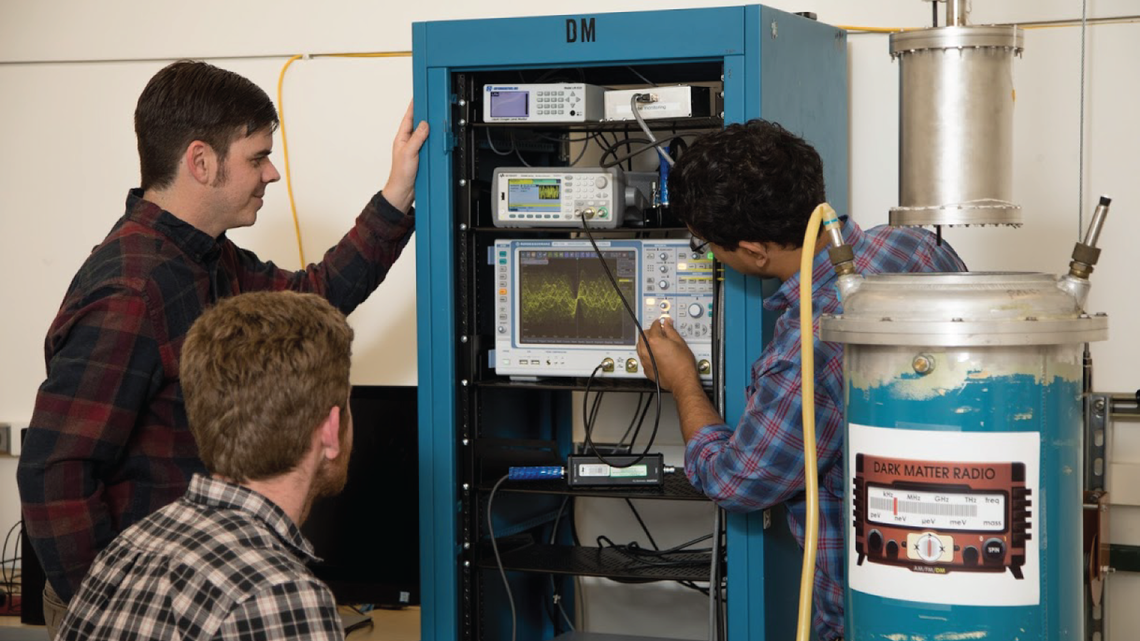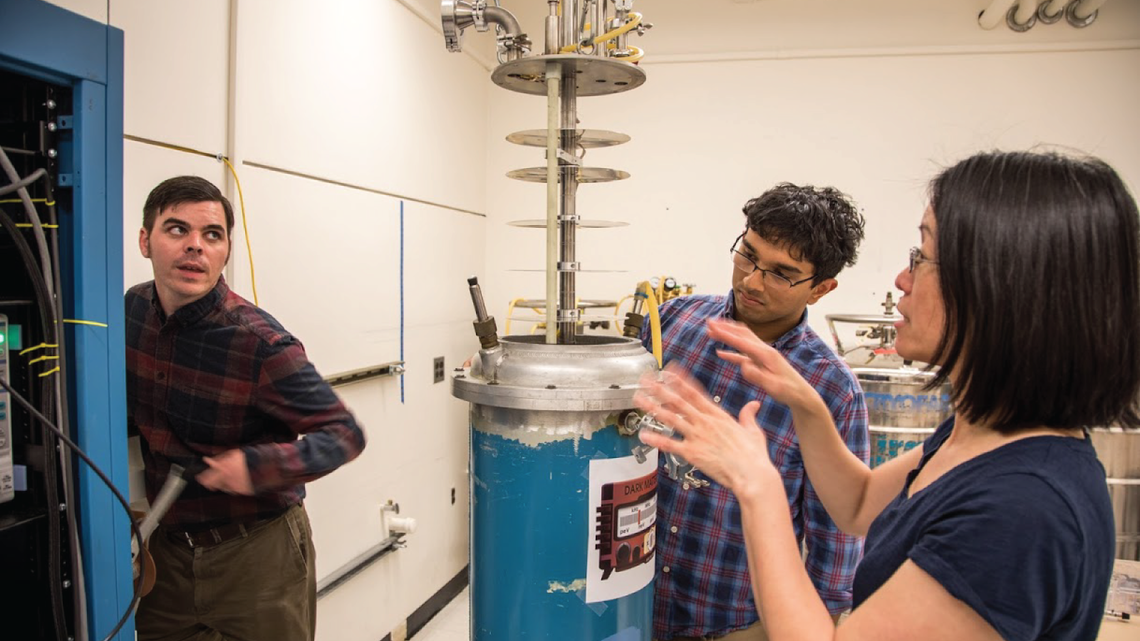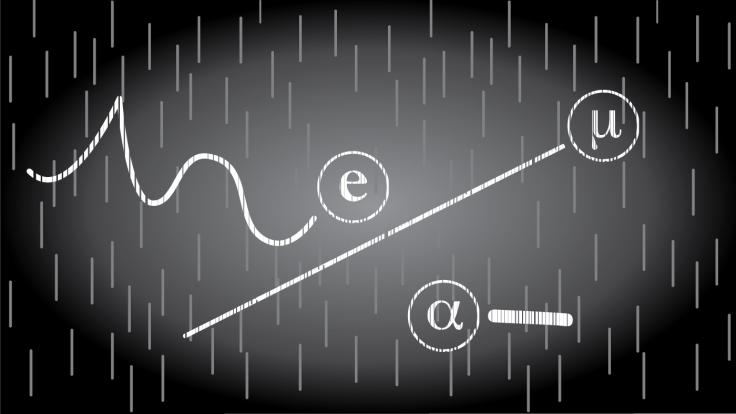Researchers are testing a prototype “radio” that could let them listen to the tune of mysterious dark matter particles.
Dark matter is an invisible substance thought to be five times more prevalent in the universe than regular matter. According to theory, billions of dark matter particles pass through the Earth each second. We don’t notice them because they interact with regular matter only very weakly, through gravity.
So far, researchers have mostly been looking for dark matter particles. But with the dark matter radio, they want to look for dark matter waves.
Direct detection experiments for dark matter particles use large underground detectors. Researchers hope to see signals from dark matter particles colliding with the detector material. However, this only works if dark matter particles are heavy enough to deposit a detectable amount energy in the collision.
“If dark matter particles were very light, we might have a better chance of detecting them as waves rather than particles,” says Peter Graham, a theoretical physicist at the Kavli Institute for Particle Astrophysics and Cosmology, a joint institute of Stanford University and the Department of Energy’s SLAC National Accelerator Laboratory. “Our device will take the search in that direction.”
The dark matter radio makes use of a bizarre concept of quantum mechanics known as wave-particle duality: Every particle can also behave like a wave.
Take, for example, the photon: the massless fundamental particle that carries the electromagnetic force. Streams of them make up electromagnetic radiation, or light, which we typically describe as waves—including radio waves.
The dark matter radio will search for dark matter waves associated with two particular dark matter candidates. It could find hidden photons—hypothetical cousins of photons with a small mass. Or it could find axions, which scientists think can be produced out of light and transform back into it in the presence of a magnetic field.
“The search for hidden photons will be completely unexplored territory,” says Saptarshi Chaudhuri, a Stanford graduate student on the project. “As for axions, the dark matter radio will close gaps in the searches of existing experiments.”
Intercepting dark matter vibes
A regular radio intercepts radio waves with an antenna and converts them into sound. What sound depends on the station. A listener chooses a station by adjusting an electric circuit, in which electricity can oscillate with a certain resonant frequency. If the circuit’s resonant frequency matches the station’s frequency, the radio is tuned in and the listener can hear the broadcast.
The dark matter radio works the same way. At its heart is an electric circuit with an adjustable resonant frequency. If the device were tuned to a frequency that matched the frequency of a dark matter particle wave, the circuit would resonate. Scientists could measure the frequency of the resonance, which would reveal the mass of the dark matter particle.
The idea is to do a frequency sweep by slowly moving through the different frequencies, as if tuning a radio from one end of the dial to the other.
The electric signal from dark matter waves is expected to be very weak. Therefore, Graham has partnered with a team led by another KIPAC researcher, Kent Irwin. Irwin’s group is developing highly sensitive magnetometers known as superconducting quantum interference devices, or SQUIDs, which they’ll pair with extremely low-noise amplifiers to hunt for potential signals.
In its final design, the dark matter radio will search for particles in a mass range of trillionths to millionths of an electronvolt. (One electronvolt is about a billionth of the mass of a proton.) This is somewhat problematic because this range includes kilohertz to gigahertz frequencies—frequencies used for over-the-air broadcasting.
“Shielding the radio from unwanted radiation is very important and also quite challenging,” Irwin says. “In fact, we would need a several-yards-thick layer of copper to do so. Fortunately we can achieve the same effect with a thin layer of superconducting metal.”
One advantage of the dark matter radio is that it does not need to be shielded from cosmic rays. Whereas direct detection searches for dark matter particles must operate deep underground to block out particles falling from space, the dark matter radio can operate in a university basement.
The researchers are now testing a small-scale prototype at Stanford that will scan a relatively narrow frequency range. They plan on eventually operating two independent, full-size instruments at Stanford and SLAC.
“This is exciting new science,” says Arran Phipps, a KIPAC postdoc on the project. “It’s great that we get to try out a new detection concept with a device that is relatively low-budget and low-risk.”
The dark matter disc jockeys are taking the first steps now and plan to conduct their dark matter searches over the next few years. Stay tuned for future results.



